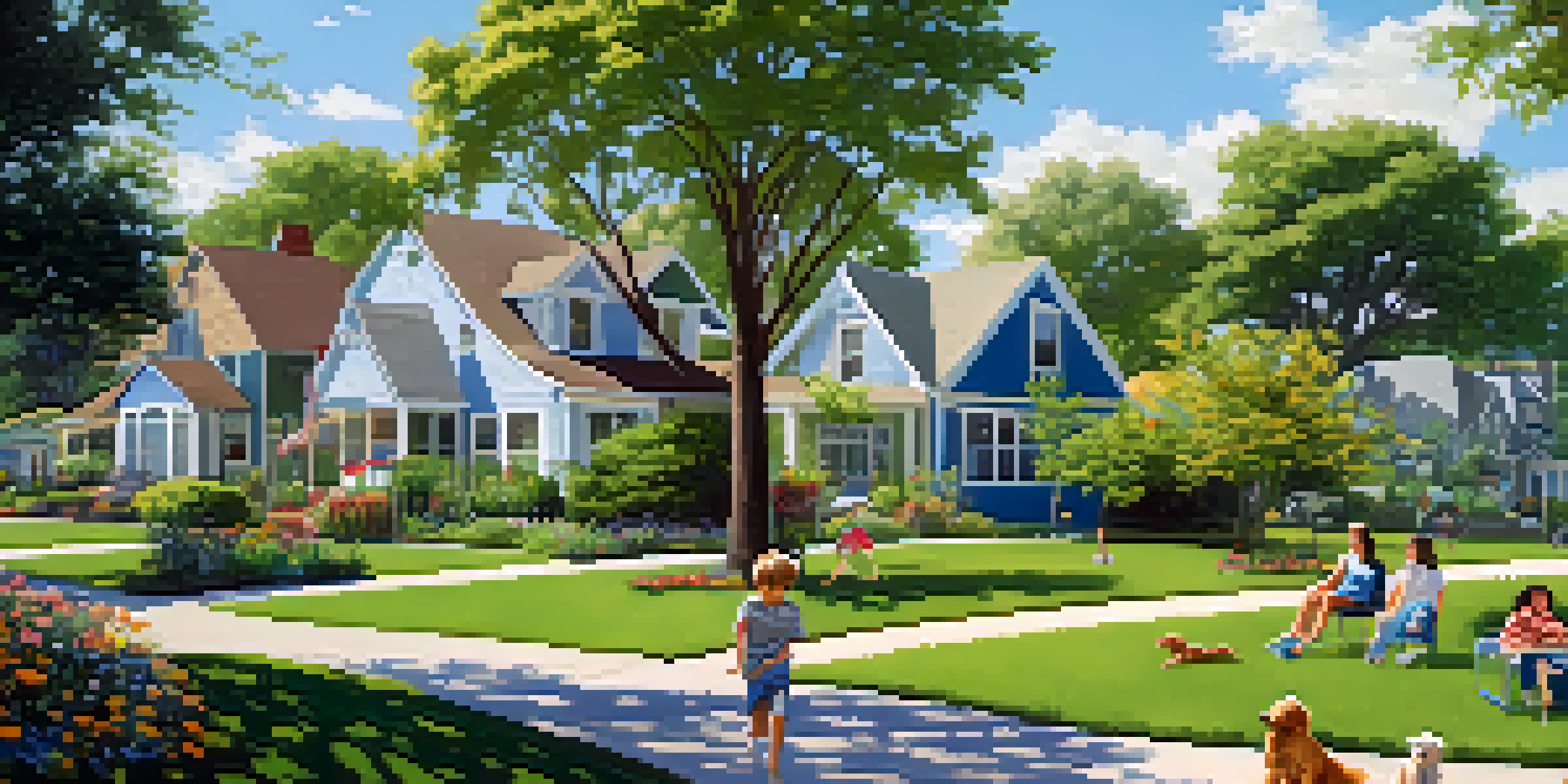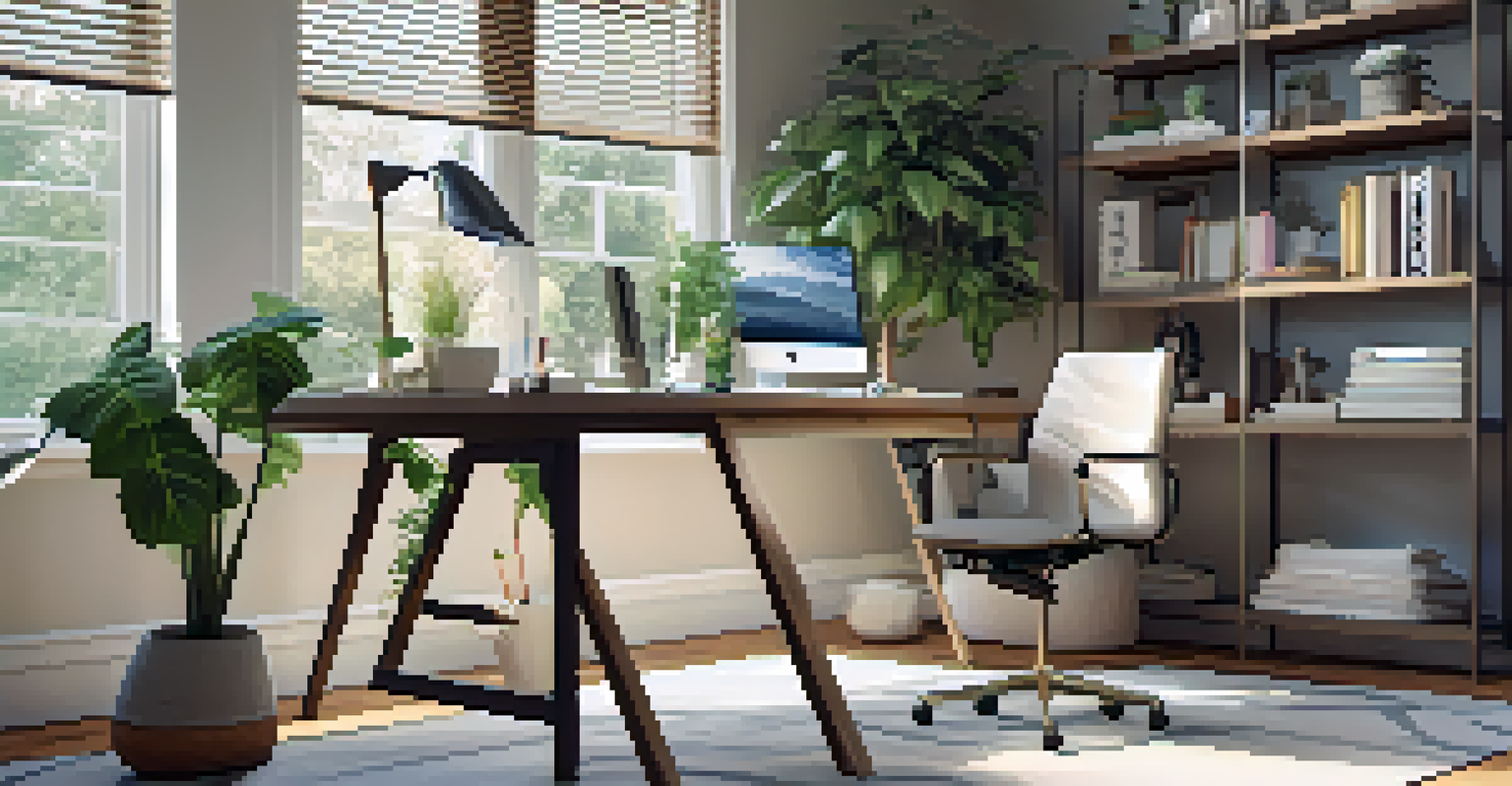How COVID-19 Changed the Dynamics of Austin's Real Estate

Initial Market Reactions to the Pandemic
When COVID-19 first hit, the Austin real estate market experienced a sudden pause. Many potential buyers and sellers hesitated, unsure of what the future held. This uncertainty led to a temporary drop in home sales, as people focused on health and safety rather than making major financial commitments.
The future belongs to those who believe in the beauty of their dreams.
However, as the dust began to settle, it became clear that the pandemic also sparked new trends. Remote work gained traction, prompting many to rethink their living situations. Suddenly, the allure of urban living was overshadowed by the desire for more space and a quieter environment.
This shift in priorities changed the dynamics of the market, with suburbs and larger homes becoming more desirable. Buyers who once sought downtown apartments began exploring properties in areas like Round Rock and Cedar Park, leading to a surge in demand for suburban homes.
The Rise of Remote Work and Its Impact
With companies embracing remote work, the need for a home office became essential. Homebuyers began prioritizing properties with dedicated workspace, reflecting a significant shift in what was considered valuable in a home. This newfound flexibility allowed many to move further away from their workplaces, reshaping the real estate landscape.

As a result, properties in previously overlooked neighborhoods saw increased interest. Areas that were once considered too far for a daily commute became hot spots for families seeking larger homes at more affordable prices. This shift led to a competitive market in these emerging areas, with bidding wars becoming common.
Shift to Suburban Living
The pandemic has led many buyers to prioritize suburban homes with more space, moving away from urban centers.
The demand for smart home features also surged, as buyers looked for properties with technology that could support remote work. From high-speed internet to energy-efficient appliances, homes that catered to the needs of remote workers gained a significant edge in the market.
Increased Interest in Outdoor Spaces
As people spent more time at home, the importance of outdoor spaces became glaringly apparent. Backyards, balconies, and nearby parks turned into prized assets, providing a necessary escape during lockdowns. Homebuyers began to seek properties that offered ample outdoor space for relaxation and recreation.
In the middle of every difficulty lies opportunity.
This trend was especially pronounced in Austin, where the climate allows for year-round outdoor activities. Buyers gravitated towards homes with features like patios, gardens, and swimming pools, making these amenities essential in their property searches. Real estate listings began emphasizing outdoor features more than ever before.
This shift not only influenced individual preferences but also impacted property values. Homes with desirable outdoor spaces quickly became more valuable, pushing prices up in neighborhoods that offered such amenities. The demand for outdoor living has now become a staple in the Austin real estate market.
The Influence of Interest Rates on Buying Decisions
The pandemic prompted significant changes in interest rates, creating a unique environment for homebuyers. With rates at historic lows, many people found themselves in a position to purchase homes they might not have considered before. This financial incentive led to a surge in activity in the Austin real estate market.
Low interest rates meant lower monthly mortgage payments, making it more affordable for buyers to enter the market. As a result, many first-time homebuyers and those looking to upgrade seized the opportunity, further fueling competition for available properties.
Growing Demand for Outdoor Spaces
As homebuyers seek relaxation during lockdowns, properties with outdoor features have become highly desirable.
However, the combination of high demand and limited inventory led to rising home prices. While interest rates were favorable, buyers quickly learned that navigating the market required strategic planning and quick decision-making to secure their dream homes.
A Shift Towards Sustainable Living
The pandemic also heightened awareness around sustainability and eco-friendly living. Many buyers began to prioritize homes that were energy-efficient and environmentally friendly. Features like solar panels, energy-efficient appliances, and sustainable materials became increasingly attractive.
This trend reflected a broader societal shift towards greener living and a desire to reduce one's carbon footprint. The Austin market, known for its progressive values, saw a growing number of eco-conscious buyers willing to invest in sustainable properties.
As a result, builders and developers began incorporating green practices into new construction projects. This focus on sustainability not only appealed to buyers but also aligned with the city's commitment to environmental responsibility, further enhancing Austin's reputation as a forward-thinking community.
Challenges in Housing Supply and Affordability
While demand surged, the Austin real estate market faced significant challenges regarding housing supply. The pandemic exacerbated existing inventory issues, as construction delays and labor shortages hindered new home builds. This imbalance between supply and demand led to a competitive and often frustrating market for homebuyers.
Affordability became a pressing concern as home prices skyrocketed. Many potential buyers found themselves priced out of the market, particularly first-time homeowners. The rising costs led to increased calls for affordable housing initiatives in the city to ensure that residents could find suitable options.
Challenges in Housing Supply
Despite rising demand, the Austin market faces supply issues, driving up home prices and impacting affordability.
The struggle for affordability highlighted the need for innovative solutions in the housing market. Local government and developers began exploring ways to increase housing supply, including zoning changes and incentives for affordable developments, aiming to create a more balanced market.
The Future of Austin's Real Estate Landscape
Looking ahead, the dynamics of Austin's real estate market are likely to continue evolving. The trends sparked by the pandemic may have lasting impacts, influencing how buyers and sellers approach the market. As remote work remains a viable option for many, the demand for suburban and more spacious homes may persist.
Moreover, the focus on sustainability and outdoor living is expected to shape future developments. Buyers will likely continue seeking properties that offer not only comfort but also align with their values concerning health and the environment. This shift may drive innovation in home design and community planning.

Ultimately, while challenges remain, the Austin real estate market is poised for growth and adaptation. As the city navigates the post-pandemic landscape, it will be fascinating to see how these changes unfold and create opportunities for both buyers and sellers in the years to come.